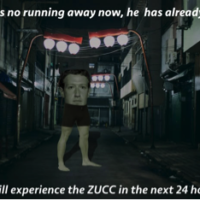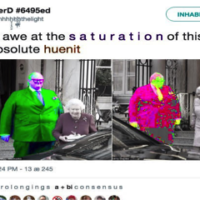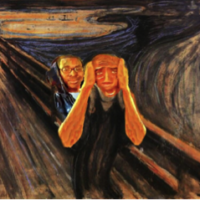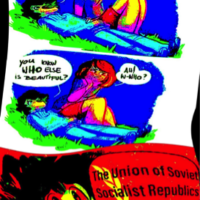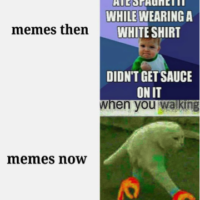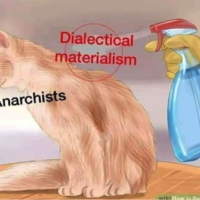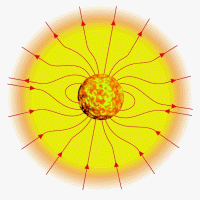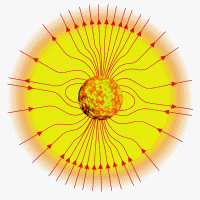ērror
(a note from the editor)
These pieces are attempts at reflection on a virused moment (Ex. 949). Circling, stirring, pixelated thought, eyes glaring onto pulseless flesh; pausing for, chancing at, sick ērror.
– Editor-in-Chief: Kwesi Thomas
– Designer: Hootan Ghaffarisaravi
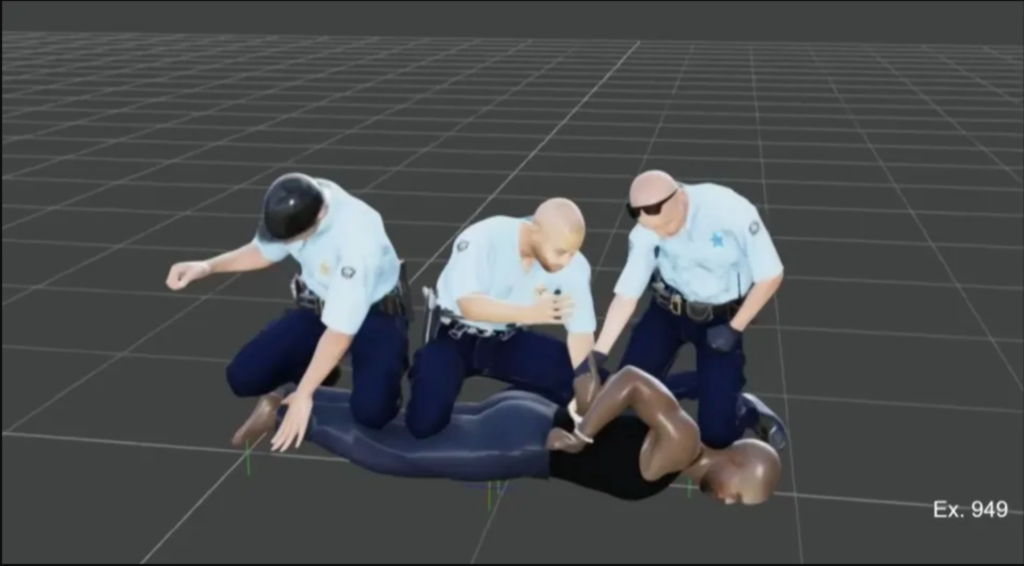
POSTMODERNISM_AND_CONTEMPORARY_MEME_CULTURE_
Julian Greco
[22/11/2018]
The advent of meme culture and its seemingly chaotic development have largely escaped the analytic gaze of academia, yet it is unlikely that memes will be swept into the dustbin of history. Memes continue to have a remarkable effect on communication, permeating nearly every internet subculture and overflowing into real-life discourse and social interaction. Since their advent, internet memes have become increasingly intertextual and self-referential, continually building upon or parodying the existing meme substrate and incorporating new cultural linkages into the fold. I will argue that the metamorphosis of meme culture serves as a microcosmic representation for the propensity of general culture to stray from modernist universal notions and move toward postmodern fragmentation and pastiche.
The social ramifications of meme culture are both benign and malignant. For future generations, the memes of today may serve as the ultimate archival material, illuminating contemporary thought on the entire spectrum of human experience from the banal to the absurd. However, as memes continue to become more intertextual and their sincerity becomes harder to discern, it is equally possible that memes will be completely incomprehensible to those foreign to our cultural superstructure, offering little insight into society’s collective ideation. More worryingly however, meme culture can also contribute to political polarization by promoting online self-ghettoization and the creation of political echo chambers.
Defining Memes
A meme is more than a picture or video that circulates around the internet; rather, memes provide an accessible format or collective symbol for achieving a discursive objective, which is usually humorous or satirical, but can also be argumentative or political. A meme can be a sound, a persona, a phrase, or even a physical motion. I argue that the advent of meme culture reflected a return to semiotic structuralism, as the ideational processes for relating to others became dependent on the tacitly accepted norms and the existing media of communication (in this case, the pantheon of recyclable meme formats). However, the foundation of these structures is collapsing; the lines between parody and genesis, between irony and sincerity have become blurred. The meanings of these collective symbols have accordingly lost their universality and meme culture has entered its “postmodern” epoch.
The Decline of Structuralism in Virtual Discourse
The origin and early history of the internet meme is impossible to delineate without arbitrary selection, as its definition is exceptionally broad. However, the development of meme culture can be bifurcated into an initial phase resembling the modernist episteme and a subsequent phase resembling the postmodern.
Indeed, the first memes to penetrate mainstream culture relied almost entirely on structure. A rotating cast of characters like Bad Luck Brian and Success Kid acted as a foundation upon which a relatable or humorous situation could be presented via the ubiquitous impact font. These meme formats were designed with an intended purpose and meme creators adhered to the meaning of the symbolism; the text was literal, and the message was coherent:
However, contemporary memes have deviated from this coherence. A 2017 editorial in The Washington Post entitled “Why is Millennial Humor So Weird?” noted that
a particular style of expression has spread among young people. Rather than trying to restore meaning and sense where they’ve gone missing, the style aims to play with the moods and emotions of an illegible world. In a way, it’s a digital update to the surreal and absurd genres of art and literature that characterized the tumultuous early 20th century. (Bruenig)
The new generation of memes embraces the intellectual and artifactual characteristics of postmodernism described by Geoffrey Rockwell (Rockwell, “Modern, Postmodern, and Virtual”). Indeed, memes are now iconoclastic about form and medium, they are increasingly self-referential and intertextual, and they are overcome with irony and subtext that make it difficult to discern the objective of the creator. The humour of pomo-memes is not about relatability, but parody, absurdity, and surrealism:
Pomo-memes also serve as a fascinating example of Frederic Jameson’s four characteristics of postmodern culture (Jameson, “Postmodernism and Consumer Society”, 2-10). Firstly, meme culture embodies the concept of pastiche: memes have become parody of parody and the source allusion fades into obscurity. Most of the time, the origin of the meme itself is also ambiguous, which makes it nearly impossible to discern if the meme is ironic or sincere. Secondly, the incoherence and fragmentation of meme culture create a sort of schizoid experience for the audience, as one can often fail to construct meaning from the illogical combinations of text and superimposed symbols. If the audience cannot understand a meme, should they assume that they are out-of-the-loop, or should they assume that the meme is simply incomprehensible? Finally, memes embody the “flatness of history” as all subject matter – regardless of how insensitive, historically significant, or recent it may be – is fair game for ridicule:

(Is this meme parody, humorous exaggeration, or a sincere political argument? It has likely been used in all three ways.)
However, Jameson’s prediction that the dichotomy between high culture and low culture would erode is not entirely supported by developments in meme culture (Jameson, “Postmodernism and Consumer Society”, 1). While there is no academic literature as of yet to support this claim, I hypothesize that esoteric and elitist meme subcultures are on the rise, and that these subcultures will exacerbate the online schism between the intelligentsia and the rest. For instance, the two memes below come from a surprisingly popular and rapidly growing Instagram page called “the_philosophers_meme_mk24”:
Meme Culture and Polarization
The growth of esoteric and subject-specific meme pages illuminates the innate aspect of community within meme culture. Since memes are extremely intertextual, internet users self-ghettoize into communities of users who comprehend a common set of references. This self-ghettoization is problematic in political discourse as it has created a plethora of echo chambers in which outrageous memes trump rational, nuanced discussion. The most demagogic memes garner the most attention and visibility online, and thus a spiral of one-upmanship effectively polarizes the internet. The ghettoization of meme culture created the conditions for Russian disinformation and polarization efforts in the 2016 Presidential election, as agents knew exactly which online communities to target for maximal effect (Calabresi, “Inside Russia’s Social Media War on America”). Further, President Trump’s embrace of meme culture has, at times, proven callous and serves to validate the absurdism found in millennial humour by rendering his office a spectacle. For instance, below is a Game of Thrones meme recently posted by Trump’s official Instagram page.

A Word on Memes and Cultural Memory
For a contemporary observer, meme culture serves as the ultimate network of cultural memory. On one hand, meme culture can be interpreted through the lens of structuralism. The totality of memes forms a superstructure that can validate the experience of an individual as universal. For instance, when one sees a meme beginning with something along the lines of “that feeling when,” and can relate to the sentiment, they begin to feel like members of a larger whole. If the structuralist interpretation is valid, it is imperative that future generations remember contemporary meme culture, as it will provide insight into our sense of humour, our hopes and fears, and the way in which we relate to each other. Certainly, memes would provide the basis for the critique génétique of historiographers to come.
However, I argue that memes have entered a poststructuralist moment. If this interpretation is correct, future generations will fail to derive any comprehensible meaning from the content of the memes themselves. The intertextuality of meme culture necessitates that comprehension requires complete contextual immersion and familiarity with a never-ending deluge of allusions. Just as memes from the distant future would be incomprehensible to us, the memes of the past will puzzle our descendants. Thus, future generations will seek to understand our culture by asking why memes turned toward the surreal and absurd. They will ask if we were hiding an underlying dissatisfaction, if we lost the ability to relate to each other, if we were coping with existential anxiety, or if we simply happened to live in an unusually expressive time.
Works Cited
Bruenig, Elizabeth. “Why Is Millennial Humor so Weird?” The Washington Post, WP Company, 11 Aug. 2017, www.washingtonpost.com/outlook/why-is-millennial-humor-so-weird/2017/08/11/64af9cae-7dd5-11e7-83c7-5bd5460f0d7e_story.html?utm_term=.4ba394173a2a.
Calabresi, Massimo. “Russia’s US Social Media Hacking: Inside the Information War.” Time, Time, 18 May 2017, time.com/4783932/inside-russia-social-media-war-america/.
Jameson, Frederic. “Postmodernism and Consumer Society.” The Anti-Aesthetic Essays on Postmodern Culture, 1983.
“Modern, Postmodern, and Virtual.” Dr. Geoffrey Rockwell in talk on Computer Gaming. A handout received during VIC184 lecture on 14 November 2018
IT_SHOULD_NOT_HAVE_HAPPENED_
T. Williams
[11/16/2020]
I was struck quite deeply by the sociality of time as it is rendered in Levinas’ Totality and Infinity. What I’d like to do, in part, is explicate this tricky notion of social time and then discuss shame and horror as a response like that of guilty conscience but differing in regards to position and temporal effect. Try to guess how much of the discourse of human rights I’m cribbing from, but then again how much does Levinas sound like Hegel?
Phenomenology often approaches time as something related to a subject. Even if we reduce our critical eye to see just the phenomena of time itself, what we remove from time is a subjectivity. Since Levinas has argued for an intersubjective time, our very idea of what is past, present, and future becomes historically contingent. Shakily, we could posit a subject whose existence precedes history, but when we have two subjects whose relation to one another constitutes temporality, history is necessarily bound up in that relationship. There are never two people (we will not count Eden, obviously) without a society around them. There is never a society that is not historically bound, that has no past.
All this is clearer if we consider what Levinas means when he refers to the judgment of history. In broad strokes, the record of history is that of rulers and elites. Think of Narmer’s Palette, an artifact from the 31st century BC, the oldest historical document (pictured below). It depicts the ‘unification’ of upper and lower Egypt. Narmer is a huge, towering figure, looming above his enemies who he subjects. Row upon row of defeated foes, their severed heads resting between their feet. This is the face of history: oppression, violence, disfiguration of the human form. Even though Narmer did not make this object, it speaks for his regime. We might comment that not just the artisan and the enemy are lost in the picture but that Narmer too disappears, eaten by his position. Until the day of resurrection, we will be unable to hear everyone who Narmer speaks for and so the past is his past. It is his will that prevails. And yet we can still glimpse through the palimpsest of history and see who has been lost.

To snap back to 2020, our time is that of others. Whether we will take possession of the past or whether it will be claimed by our oppressors is the result of an upcoming battle. But the decision is not yet made, the ink is not yet dry. If time were totally the manse of the single subject, we’d be left with nothing but time to waste until death. But sociality, a relationship with the other, opens the door to memory, to the future, and to the past. Only in the contexts of others can time have meaning. As Hisham Matar writes in A Month in Siena, it is “neither good nor possible to exist entirely alone”.
We have a problem that should now be clear: history is awful, an ethical nightmare. The guilty conscience which Levinas describes is a consequence of the most basic moral reasoning combined with a clear vision of history. We do not want to be responsible for murder, the other’s death, but we see how much violence our present position relies on, not just the historical exploitation of others but their suffering now. We are stained by history, guilty. The pandemic, however, has revealed other emotive, ethical responses to history that come from different positions of vulnerability.
Shame. All over the world, there have been different responses to the pandemic. It has become all too clear that some states have handled it better than others and that the consequences of inaction will be disastrous. Our vulnerability to the plague is not equal. Those who must work in-person for economic or professional reasons are especially exposed. Again and again we find that the worst outbreaks occur in elder care homes and workplaces that employ workers from marginalized communities. Though the former of these groups may have notable material wealth that the later is lacking, both are gladly exposed to the risk of infection. In our past, we see how this vulnerability is the result of historical violence and dispossession, systems which have alienated children from parents and impoverish certain communities. In our present, we can see how this vulnerability could have been mitigated. Clearly, someone in charge could have taken better measures to save lives, but did not. To realize this is the sort of world you live in is to feel shame. The temporal register of shame is the present, it is the recognition that the ‘not yet’ is becoming ‘now’ for someone else.
Horror. Language distances us from the world more often than not. The word ‘corpse’ is not a body which once lived. The word ‘dispossession’ is not the orphan in the sacked city. But the full weight of language’s concrete referent can come crashing into focus. I’m sure many of us felt only somewhat uncomfortable seeing case numbers rise. Maybe some felt very little. Did this not change when you saw the photos of mass graves, hospitals breaking under the pressure of care in Italy? Words and what they mean came back together. The rising numbers regained their awful consequences. But the terror goes beyond one fact or one moment. A greater horrific sense comes into focus as the magnitude of suffering becomes apparent. As each body is tallied, as the morgue overflows, as the black smoke of the crematorium thickens, we see a graph of the unthinkable being drawn on the space of temporality. This is horror. Its temporal register is the past. To feel horror is to realize the significance of history.
What joins guilty conscience, horror, and shame together is the ethical feeling at their core. We should be wary, though, of the tendency to pay attention to the distress of the comfortably locked down while the pain of the pandemic’s victims (who are really the victims of those with power) is glossed over. Levinas’ concern for intersubjective temporality regards how to speak for those whose voices are lost to time, but those who are intubated are not necessarily silenced forever. Still, the affecting power of Levinas is how he integrates emotive responses into the process of righting historical wrongs. Our awareness of social time can cause many reactions in us, waking us from the stupor of history, but our own desire for ethical action should not overwhelm the sounds of those in need of reckoning. There is so much in this world that should not have happened and should not be happening. Someone should have done something, but they did not. We are here as a result. I am in no mood to comment on the future or on justice. Goodnight.
A_DIVINE_ENCOUNTER_
Sofia Freudenstein
[12/03/2020]
The following poem was written after showing Christian patients on my floor in the geriatric hospital for my Clinical Pastoral Education unit an advent service.
“When two people relate to each other authentically and humanly, God is the electricity that surges between them” – Martin Buber
For months, I’ve felt awe alone
Under stars, in books, within the recesses of my mind
Encountering The Other merely through a mirror
Protected by my own boundaries
The awe I felt was self-contained
Little did I know, this also made God’s voice self-contained too
I didn’t stop to acknowledge what had become rote
I didn’t realize I had stopped yearning.
And then today, I became overwhelmed with Presence
In the metaphors of shepherds and baby boys
But especially in patients’ cracked singing voices
In non-verbal patients’ tears
I watched, mouth slightly agape
Recognizing God touching all of our souls
Completely unprepared.
It felt like being in a crowd and locking with
Someone who seems to see you for exactly as you are.
I_THOUGHT_WE_WERE_FRIENDS_? (The Etiquette of Social Media)
Julia Eva Viele
[06/14/2020]
This paper discusses the notion of friendship between individuals, specifically those who engage in both offline and online worlds. I argue that when a friendship is engaged in on Instagram, it can produce adverse effects on that same relationship offline. However, for the purpose of this paper, an offline relationship is not exclusive to the physical realm and can thus include phone or FaceTime calls. Similarly, the examples employed to support my argument are specific to the Instagram app, as the issues which arise on this platform may not occur on all forms of social media. I firstly explain the app’s primary functioning and assumed purpose, in order to contextualize and advance the concept of social media etiquette. Going forward, social media etiquette will comprise a set of norms that typically influence or guide the online behaviour of Instagram users. I then demonstrate how the manner in which friends engage online, as well as with others and with themselves, can garner a negative impact on their external relationships. Lastly, I will object to the counterclaim which suggests the difficulty that lay in the reality of pursuing such etiquette online. Given the constraints of daily life, it may not always be possible to abide by this etiquette.
Instagram is an app that enables users to post photos and videos of their interests online. The platform allows individuals to ‘follow’ people who they know – a method of subscribing to published content – while permitting others to follow them back. Since many individuals engage with their friends online, they often share mutual followers – a concept similar to having mutual friends in the offline world. Correspondingly, it is assumed that the primary objective for posting photos or videos on Instagram is to accrue a greater number of these followers. Additionally, upon posting, users can see which of their friends ‘liked,’ or acted in support of the content that they have shared. In this way, online interactions constitute a form of positive reinforcement, especially if they are derived from followers who are emotionally significant to the users. Although Instagram users may have multiple online friends and even more followers, I believe that they still appear more likely to seek virtual validation from members of their offline social circles. In turn, the negative impacts of Instagram on friendships can prove detrimental to, and observable among, relationships otherwise strong offline. In order to navigate virtual interactions with offline friends, Instagram users must engage in social media etiquette. This etiquette influences the online engagement practices of individuals, especially when these interactions are with close friends from the offline world. Just as there are conventions and traditions which guide interactions with offline friends, a similar framework can be applied to Instagram.
‘Social Media Etiquette’ can be explained through the concept of‘ accepted norms of behaviour. When our friends engage with us, we are guided by the norm of interaction. The norm of interaction stands for common place and habitual engagement we receive from our peers. When we engage with others, however, there is an emphasis on the norm of activity. This norm refers to how often and who we choose to engage with. Finally, when we engage with ourselves, we look to the norm of information. The norm of information guides our personal information sharing in the online world. Some general norms are when my close friend posts a photo of herself online, I may like it and even comment on the image. On her birthday, I may share photos of us admiring her for her character and our friendship. When we get into a fight, regardless of my ill-feelings toward her in the moment, I will not unfollow her on the app. In this case, the norm of interaction guides me toward the most appropriate choices in those circumstances. In other words, individuals unknowingly abide by this etiquette, as it encompasses the dynamics of our dualistic relationships – a merger between online and offline lives. Consequently, the norms and attitudes characteristic of offline friendships permeate into the online relationship. Though these signs of admiration or respect in online friendships showcase themselves textually, they are nevertheless valid given the online conditions for interaction.
The social etiquette that individuals adhere to in non-virtual social interactions is mirrored in the culture they collectively cultivate online. Suppose you surprise your friend on their birthday with flowers, yet, on your birthday, you do not receive so much as a call. The disappointment that stems from your friend’s silence and inaction in the offline world is rooted in their perceived departure from the social etiquette. Though facilitated through a different medium, this example nevertheless exemplifies the significance and necessity of following social media etiquette during online interactions, particularly those on Instagram. When posting a birthday wish for your friend, you expect them to reciprocate the celebratory sentiment on their profile. Otherwise, individuals who deny or disregard the norms of behaviour for online friendships may damage those offline. Such as the case in offline relationships, the lack of intent behind the respective social transgression is irrelevant to the severity of its impact on the friendship. In summary, analyzing the behavioural norms associated with how our friends engage with us, with others, and with themselves, online will provide us with an improved understanding of why these social issues occur.
Engagement with Us
In this context, the way in which friends engage with us online refers to their activity on our respective Instagram page. Do they abide by the conditions of online interactions by connecting with us on the platform? When our friends do not interact with us in the manner or to the degree we anticipate, it can lead to stress and anxiety. Although supposedly optional for
Instagram users, ‘Social Media Etiquette’ outlines informal rules actively followed by many. For example, my close friend, Amy, is aware that I have just graduated from university. When I post a photo online alluding to my accomplishment (a picture of me posing in my cap and gown) I look forward to her congratulatory response. However, when she does not acknowledge my
achievement by way of a comment or like, I begin to question the motivation behind her silence. Critics may counter that defaulting to a negative conclusion about Amy’s inaction seems over analytical and unwarranted. While I may forgive this initial mistake, what else can I assume when my friend fails to interact with the last five photos on my profile? Given we are friends offline and thus willingly encourage each other in that relationship, it offends me that she does not offer me identical support over Instagram. I may constantly engage with her posts in an attempt to translate the intimacy I feel toward her, but her inability to reciprocate online norms leave me with negative perceptions in our offline friendship.
Therefore, while seemingly trivial, these instances where I do not receive engagement from my inner circle inadvertently communicates their apathy toward my well-being. That is to say, when those I respect violate the behavioural norm of interaction, it harms my self-esteem in unconventional ways. It feels rewarding to support my friends publicly, but my primary reasoning behind this online support is to see it returned. So, when said reciprocity does not materialize, it implies that my friendship is problematic or one-sided; as in, the other person has lost interest in the relationship or is angry with me.
Overall, it feels as though we implicitly sign up to support our friends online when we engage in intimate offline relationships. Individuals may feel a sense of betrayal in their offline friendships when social norms are not abided by online. Therefore, if we can congratulate our friends offline for their accomplishments, we should similarly be able to do so in the realm of Instagram.

Engagement with Others
The neglect of an inner circle, particularly in affirming a user’s online presence, is just one of the many actions that can negatively impact offline relationships. I believe that Instagram pressures us to subconsciously, or even deliberately, monitor our friends’ interactions with others online. Hence, our ability to observe our friends’ activity with mutual friends on the platform may negatively affect the perceptions of our own relationships with those individuals. In the offline world, the only way of knowing when my friends gather or how they interact is through their direct disclosure of that information. In the world of Instagram, however, I can learn of their relationships with others by simply viewing their profiles or feeds. Moreover, my friends may post images that signify a closeness with others that may be artificial or disloyal; I may feel excluded or replaced. Consequently, the social media etiquette framework holds us accountable in our relationships to consider the feelings of our friends online prior to posting. When our friends diverge from these behavioural norms, they may instigate our resentment towards them in our offline relationships.
I may post a photo on Instagram of my friend Amy for her birthday and accordingly caption it with positive thoughts about her and our relationship. She may respond to my post affectionately, appreciating my acknowledgement of her in the online world. Nevertheless, when my birthday approaches, she does not share a tribute. Instead, she posts a homecoming picture alongside a mutual follower.
Not only does she fail to commemorate me on my special day, but she insinuates to her followers her prioritization of a different celebration. Following the etiquette framework does not force my friend to publicly send me birthday wishes, or even like my birthday post. It does stress, however, that she evaluates how her choices online impact my feelings in the real world. While I attempt to rebuff any negative connotations, I nonetheless understand there is a growing online standard of posting about close friends for their personal milestones. Therefore, Amy’s decision makes me feel insecure; I feel that her reluctance to celebrate me online deems me unworthy of any such affection. Overall, the negative emotions I experience as a result of this interaction closely resemble the emotions navigated among friends in the offline world.
Assume that, a few days after my birthday, I prepare a birthday post for my friend Stacy – a mutual friend I share with Amy. Upon uploading, I see Amy post an array of photos celebrating Stacy as well. Amy’s willingness to publicize her relationship with another companion reverts me back to my negative thoughts regarding our friendship. Is she embarrassed to post about me publicly? Why did she post for Stacy’s birthday and not mine? Does she feel closer to Stacy than to me? Stacy posted for both of our birthdays, so I presumed all three of us were intimate friends. Regardless, Amy’s choices online leave me feeling angry towards her. Anxious questions arise as a result of Amy not following the norm of activity that oversees the regularity of who we engage with. Accordingly, these reactions comprise another example of how the behaviours we display online can affect our offline relationships.
Notably, the impact of Amy’s online activity is only negative due to the exposure and accessibility of Instagram. For instance, if Amy writes a card for Stacy and privately brings her flowers and gifts, I would stay ignorant and my feelings would be kept intact. However, due to the visibility of the online world, I am made to question Amy’s relationship with Stacy, particularly in comparison to ours. As a result, the etiquette framework places a responsibility on us to consider the feelings of our close friends when engaging with others online. While our actions may not be directed towards the third party, they can still have a negative impact on those individual relationships.
Engagement with Ourselves
In the previous sections, I argued that the approach friends employ to interact with each other and others online can produce a negative impact on offline bonds. The final means by which this impact is generated is our friends’ choice of interactions with themselves. An inability to follow the norm of information can have undesirable impacts for offline friendships. Stacy and Amy have been friends since childhood and consider each other part of their intimate circle. Though they do not always see each other, they make efforts to stay connected beyond Instagram. One day, however, Stacy posts about her new business venture. She is starting to do eyelashes and has created a new Instagram account to promote her business. Amy was caught off guard by Stacy’s post and finds herself confused. On one hand, she is happy and proud of her friend, but on the other, she is hurt as they had just spoken earlier that week and Stacy made no mention of this. Seeing that the girls identify like sisters, Amy is offended that Stacy shared this information with her at the same time that she shared it with her 2,000 followers. Amy felt that since the information was so accessible to everyone, there was nothing that signified her intimacy in their relationship.
Is Stacy required to share everything about her life to her friends? Absolutely not. Does Stacy have some responsibility to share her important information with close friends before she shares it on the internet? Yes. When we post in the online world there needs to be an element of mindfulness when it comes to our audience, hence following the norm of information. Amy felt like she was no more important than the next person who follows Stacy online. Moreover, we reach a point in our intimate friendships where we recognize that there are special considerations that need to be taken towards people we care about. Thus, there is a way in which we treat people that singles them out because they are special to us in some way. It is like getting engaged and telling your co-workers before you tell your family. Though they may be happy for you, they do not know you as intimately and so they are not as involved in the outcomes of your life. Stacy’s violation of online behavioural norms and disregard of the significance in sharing this news with her friend prior to the Instagram community left Amy anxious about their offline relationship. It began to make Amy feel opposed to giving Stacy the amount of importance she does in her life. Similar to the betrayal we can feel in our offline relationships, Amy felt betrayed by not hearing the exciting news about her friend’s future in a more intimate setting first.
Objection
I will now object to an argument concerning the plausibility of following social media etiquette online. Though I agree that those who engage in these norms and behaviours are trying to mirror their offline friendships online, I argue that abiding by this etiquette is impractical. For example, on my friend’s birthday, I decide not to post an image of her – this is not because I do not love or care for her but because I’m just not in the mood to be online. The reason for my lack of acknowledgement towards her has nothing to do with her and everything to do with me. Analyzing the situation so deeply that it affects her perception of our relationship offline is not taking into account the limitations of reality in the non-digital world. That same day I may have been crazy busy at work or just couldn’t find a photo of us I felt comfortable sharing. Therefore, a lack of acknowledging my friend online should not be an indicator that there is a problem in our offline relationship, despite our feelings to the contrary
Conclusion
An objection can be made that abiding by the online etiquette is impractical as people may not have negative intentions when they do not acknowledge their friends online. Nevertheless, when we share intimate relationships offline, we implicitly sign up to publicly support our friends in the online world. It is not always easy to support our friends offline and yet when we are so intimate with them, we place this responsibility on ourselves. An absence of this online recognition, especially over time, gives an individual the right to question and feel uneasy towards their friends in offline settings. As we have seen, social media etiquette can be expressed in how our friends interact with us, with others, and with themselves online. This framework can be extended beyond friendships and onto the world of relationships more broadly construed. Though we may ask different questions, the same conduct applies. Disregarding norms that guide online behaviour can lead us to feel negatively towards our friends offline. Hence, the purpose of social media etiquette is to guide us within our activity, when manoeuvring between the two realms of our relationships.
RETHINKING_THE_LIVING_EARTH_ (An Alternative Perspective to Life, Extinctions, and Climate Change)
W.S. Rudge
[01/08/2019]
The Earth is alive. If you were to propose this idea as recently as the 90’s it would have been met with giggles and skepticism. Fast forward three decades and this philosophy has led science to explore new directions by providing a new perspective on our planet. The following is an alternative perspective to the philosophy of the Earth being alive that was initially proposed by James Lovelock in his book, “Gaia: A New Look at Life on Earth”. This new perspective is one that I have been working on for some time now, and it not only provides a differing view of the Earth’s status as alive, but also explains the cause of many extinctions, the reasons for Earth’s climate change then and now, and even the meaning of life in a particular sense.
The living Earth theory created by James Lovelock was born from the idea that the Earth, as a whole, is alive. According to Lovelock, this perspective was inspired while viewing a photo of Earth from outer space. His hypothesis then led him to examine a series of patterns that are repeated in Earth’s environments, patterns which resemble the characteristics that are associated with things typically defined as alive. More specifically, he proposes that Earth is an entity that uses the different forms of life that are within it to regulate and maintain the environments which allow it to remain living. These forms of life were put there by the entity for the purpose of preventing the creations of positive feedback loops. Feedback loops are a term used in science to describe reactions in cycles. A cycle which maintains its balance is considered to be a negative feedback loop. While a cycle that does not maintain a balance due to an increase in one of the reactions is referred to as a positive feedback loop. These could eventually lead to an extreme with an excess in some parts of the cycle. For Earth, positive feedback loops would result in the excessive production of potential harmful elements in an unregulated environment that threaten the life on it.
Referencing thermodynamics, Lovelock states that planet Earth is a closed system to the extent that only heat and energy can move in and out of it. He names the living entity belonging to Earth “Gaia”. The contents in this closed system behave as Gaia’s immune response and their responsibility is to react to any potential threats. He states that his Gaia theory is a contrast to the conventional thinking of its time which held the consensus that life had evolved from a series of random causes and effects (Lovelock, “Gaia: A New Look at Life of Earth”, p. 152, [1]).
To support his argument, Lovelock searched for patterns on Earth that relate to his theory. He identified what he believed was a pattern with the regulation of salt content within our oceans and seas. It appeared that the salt concentrations in these large bodies of water were prevented from becoming so strong that they would no longer support the existence of life within them (Lovelock, p.92). He also believed that there must exist some processes which regulate our atmosphere, preventing elements within the atmosphere from reaching catastrophic levels that would threaten the existence of life on Earth (Lovelock, pp. 22,39,65). Lovelock further suggested that plate tectonics were created by Gaia for the purpose of providing nutrients to the biosphere (Lovelock, p.100). Using these premises to support his argument, Lovelock concludes that the planet itself is alive and its own entity. Thus, all life on Earth serves as a function of this entity he called Gaia. By abandoning that life is a result of cause and effect for the belief that Gaia created all life that exists to serve its purpose, Lovelock must also conclude that Gaia had to have existed before all other forms of life on Earth.
For there to be life, that which is living must reproduce. Therefore, Gaia must be the product of some form of reproduction. For Gaia to be considered as an entity possessing life, it must be explained how Gaia’s life was made and how it is able to reproduce. Furthermore, all life on Earth that has existed prior to the present day is found in the layers of Earth beneath us. This demonstrates a gradual expansion of the Earth’s radius and its ability to grow. But how can Earth be growing if it is a closed system as described by Lovelock?
I propose a competing hypothesis also based on the philosophy that the Earth is alive. I utilize different data to support my own definition of what it means to be alive . Similar to Lovelock, I explored repeated patterns that would associate Earth as having the characteristics of life.
Defining Properties of Life
Consume or be consumed. This statement can be characterized as defining a basic function of all life. If you are to define Earth as being alive it must consume and also has a risk of being consumed to support other lives. One way to conceptualize Earth’s ability to consume is to consider its force of gravity. Earth’s gravity is used to absorb other nearby masses. This consumption of other masses would result in an increase to the mass of Earth and allow it to grow. In contrast, Earth can also be at risk of consumption by the gravity of other much larger masses.
I observed other notable patterns involving the evolution of life on Earth. It is thought that there exists similarity between extinctions of life on Earth and the development of a stem cell, where life begins as a single stem cell that continually diversifies while it develops within the environment of an embryo. Likewise, Darwinism demonstrates that Earth’s extinctions were shown to diversify as life on Earth evolved. Thus, it was determined that researching Earth’s extinctions may reveal answers to the Earth’s being alive. From this research, a determinant variable affecting all life on Earth was discovered which will explain Earth’s history of climate change and all of its extinctions. From this I drew a conclusion that contradicts Lovelock’s thesis that life is not a product of cause and effect. I propose that:
DNA IS A FUNCTION OF ITS ENVIRONMENT. HOW IT EXISTS AND
EVOLVES IS DEPENDENT ON THE VARIABLES WITHIN ITS ENVIRONMENT.
This conclusion infers that all life is a result of cause and effect, since environments determine the type of life that lives within it. There are no polar bears in the desert or lizards in the Arctic. An observation that implies where something exists determines how it exists. If DNA is responsible for how life exists, then it is DNA that is reacting to the variables within an environment. We have viewed life since its beginning as different kinds of species and organisms instead of the one constant that is possessed by all life, DNA. It is this property of life that is its foundation. DNA is responsible for ensuring that there has always been life after environments have changed. So, the answer to whether the Earth is alive and why life exists must include the purpose of DNA. Viewing DNA as a function whose existence has served a purpose for Earth over hundreds of millions of years, it is concluded that it is not the form that DNA takes that maintains its value. Its value must be in what all the forms of DNA, past and present, have in common.
Over millions of years DNA has allowed Earth to accumulate mass resulting in the growth of its radius. The basic purpose of all life is to consume or be consumed and then reproduce. If the Earth is to be considered alive, it too must follow this precept. As mentioned previously, large masses such as planets and stars consume via gravity. Except, there is a limit to the amount of mass that a single object can accumulate before it loses mass. This limit occurs at hydrostatic equilibrium, that point where a mass becomes so large that pressure from its inside pushes outward and is combined with its force of gravity on the outside pushing inward. The result from the combination of these forces causes the mass to radiate energy, which turns the enormous mass into a burning star. Stars then start losing mass via light energy. This is proven possible by Einstein who showed that mass will be lost by a factor of L/c² from a radiating mass, where L is the change in energy (Einstein,”Does the Inertia of a Body Depend Upon Its Energy-Content?”, [1b}). DNA based matter captures this light energy emitted from a star and converts it back into biomass, thus allowing Earth to accumulate mass without the use of its gravity. The total mass that becomes light is small but so too is the total mass at the end of life after decomposition. This process is allowing for the presence of new mass in a closed system that produces layers on Earth’s surface over millions and millions of years. This also makes DNA a function of light and susceptible to any changes in light energy produced by the Sun. Photons are thus an independent variable in the environment that can affect the function of DNA.
From this conclusion, I hypothesized that light energy from the Sun must not be constant and that changes in light energy may be responsible for all extinctions that have taken place on Earth. This proposal inferred that extinctions are not a result of some random cataclysmic event, rather they are caused by a gradual change to environments that eventually affected all life within it.
It has heretofore been the consensus that there is no identifiable pattern to extinctions which have taken place over the past hundreds of millions of years on Earth. Researching these extinctions has provided evidence a pattern does exist. This pattern provided a supporting premise and a simple explanation for all Earth’s extinctions.
If we take all the documented extinctions and epochs on Earth over the past 542 million years, we have an estimate of the following times:
Precambrian 542 Triassic 201 Cambrian 485 Jurassic 145
Ordovician 444 Cretaceous 65.6
Silurian 408 Paleocene 53
Devonian 359 Eocene 33
Carboniferous 299 Oligocene 23.6
Permian 252 Miocene 5.3
Pliocene 2.6
From this it is noted that there exist distinct lines of symmetry found at 252 Ma and 2.6 Ma. Applying a constant ratio to the angles between extinction events to model the angular separation, the following diagram was constructed (fig. 1). The diagram’s pattern implies the conclusion that not only does Earth’s orbit rotate around the Sun in an x-y plane, known as its ecliptic, the ecliptic also rotates in the z-plane around the Sun. This motion results in Earth eventually covering the entire surface area of the Sun over millions of years. I have termed this motion the “Copernicus Integral”.
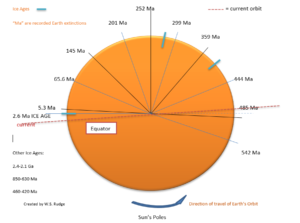
(figure 1)
Notable points on the model aligned with unique events which took place on Earth. The model shows that the extinction event that occurred when Earth’s orbit was positioned at the Sun’s poles is the point where the highest energy would be. This position also corresponds with the time of the greatest mass extinction . Notably, this period is documented as having extreme seasons of climate. Also, according to the model, the time the Ice Age occurred would have been when Earth was positioned at the Sun’s equator. A position that assumes to be the point of lowest light energy. Furthermore, where the model suggests the position of Earth’s orbit with respect to the Sun would be now aligns closely with where it currently is.
To make such a proposal requires an answer to how Earth’s ecliptic is capable of traveling in the z-direction around the Sun? Again, Einstein’s theory of general relativity shows how this motion is possible. His theory demonstrates that massive objects such as stars will cause what is referred to as a ‘bend in space time’. Such a bend allows objects that are orbiting these masses to have their ecliptic rotate over time, a motion known as the Schwarzchild precession. This motion has been observed in our solar system with Mercury, the planet closest to the Sun, but has not been associated with the motion of Earth’s orbit until now. This motion was also recently discovered with a star named S2, orbiting a blackhole (Conover, “A star orbiting the Milky Way’s giant black hole confirms Einstein was right”, [2]).
The last premise presented to support this argument was discovered while searching for the different frequencies of light emitted from the Sun. Attempting to explain the change in light energy that is believed to be the cause of changes to Earth, this search concluded at the European Space Agency’s website. Where, at the bottom of the webpage, was a separate topic involving the Sun’s magnetic field. It showed a diagram displaying the dispersion of the Sun’s magnetic field lines measured by the European Space Agency’s satellite, Ulysses. This measurement yielded the following unexpected result:
(Agency, “How the Sun Fights the Cosmic Rays“ [3] )
It was immediately noted that the arrangement of field lines was similar to the lines from the pattern of extinctions created by the extinction model. The two images were superimposed with the extinction model diagram on top of the magnetic field lines diagram from the European Space Agency. The following shows the result:
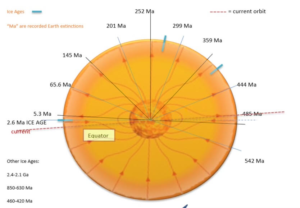
The superimposition of both diagrams appears to show a correlation with the positions of extinction from the model created and the magnetic field lines from the Sun. Not only did they align, but so too did the number of lines. From this, I concluded that the Sun’s magnetic field must have some effect on the energy of the photons that are being emitted from its surface and this is what is responsible for creating the different energy levels of light that reaches Earth. These changes are responsible for altering climate, environments, and the life within them.
Earth’s ecliptic is rotating. It is covering the entire surface area of the Sun exposing Earth to different energy levels. This motion is gradually altering Earth’s environments and influencing the base of the food chain of the life existing within them. This process is occurring over millions and millions of years. This suggests that DNA is reacting to the changing of the light energy, making DNA a function of light. As a result, genetic functions that produce biomass are dependent on the light energy available at that time. From chemistry’s equation for the relationship between mass and the number of moles we have (Bissonnette,”General Chemistry Principles and Modern Applications”, p. 57):
n=m/M
(where m = biomass produced, n=number of moles, M=molar mass)
A rough model was created incorporating the wavelength of light as part of the equation. Resulting in the following equation:
∑ m= (M·n)/λ
(where m = biomass produced, n=number of moles, M=molar mass, λ=light wavelength)
This equation states that the total mass produced can be a result of a varying wavelength of light. The shorter the wavelength of light, the greater the light energy, and the more mass that will be produced. This is a crude and simplified model, but it may provide an explanation to why dinosaurs and plant life were able to be so massive compared to life which exists today. That is because the light energy that was available during their time allowed genetic functions to produce and sustain such an enormous mass. It should be noted as current science begins to expand and study the interaction between light and biomass in the fields such as photomorphogenesis and photobiology, science needs to be cautious and aware of the impact of what it develops through changes in light energy and the effect it may have if that is introduced into the food chain. This proposal suggests that there would exist potential health hazards when products whose biomass is increased by altering its exposure to light energy are introduced to an ecosystem.
To counter what is being proposed, an argument is presented from conventional science that states a meteor is the cause of the dinosaur extinction. This contrasts the philosophy that a change in energy is what created the change in life and caused all of the extinctions. In response to this, I lay out the defense of my hypothesis using recent studies suggesting the dinosaurs were dying off before the proposed meteor impact (Yong,”The Long Decline of the Dinosaurs”, [5]). This evidence adds support to the hypothesis that these are not extinction events but gradual changes in energy levels that initiate a series of cause and effects. Furthermore, the argument that a meteor was the cause of the dinosaur extinction was based on a layer of iridium found in Earth’s layers dating back approximately 65 million years ago, the time near the extinction of dinosaurs. Some scientists concluded that the iridium could only have been created by a high impact event and this event was a meteor colliding with Earth. What is being overlooked by this theory is the possibility of another cause for the presence of the discovered iridium layer. It is possible, similar to how the Earth’s orbit passes through cosmic debris located at the same position along its path causes there to be a meteor shower entering our sky each year, that approximately 65 million years ago Earth’s orbit may have passed through an iridium cloud located at the same point in the trajectory of its orbit each year. Explaining what created the layer of iridium on Earth approximately 65 million years ago.
A recent study published by Cornell University gives sustenance to this possibility (O’Callaghan,”Dinosaur Extinction May Have Been Caused By An ‘Interstellar Cloud’”,[6]). The paper suggests that there is significant evidence that Earth’s orbit travelled through an iridium cloud which would have killed the dinosaurs (al. T. N.,” End-cretaceous cooling and mass extinction driven by a dark cloud encounter”, [7]). The discovery of this cloud would provide verifiable evidence to support this hypothesis if the cloud was found along the path of Earth’s orbit at approximately 1 AU (Earth’s current distance from the Sun), where the model proposes it would be. This should provide strong proof that Earth’s ecliptic does rotate around the entire surface of the Sun. The possible location of the iridium cloud is shown by the highlighted region of the proposed model:
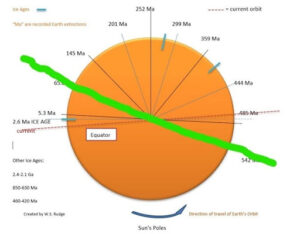
For Lovelock, the Earth being alive gave meaning to life on Earth as an immune system for the preservation of its life. Alternatively, what this proposal appears to infer from its interpretation of the Earth being alive is that the meaning of life on Earth is to serve as a function which allows it to accumulate mass and grow. That meaning is described as follows.
The Meaning of Life
Life involves chemical reactions that reverse other reactions at a distance. The meaning of life is being defined as a function. This function is summarized using the chemistry symbol, “⇌”. The symbol, ⇌, is an equilibrium arrow. A symbol used in chemical reactions to describe a reversible process. Therefore, the meaning of life is to reverse a chemical process.
When interpreting the meaning of life, it should be recognized that it must be all inclusive. This implies that its meaning cannot be specific to one species. Evolution and the discovery of the extinctions of a variety of life forms demonstrate that life’s importance cannot be specific to a single species, since no single species has lasted the entire existence of life. Thus, it is not the form that life takes wherein lies its meaning, there must be a common function which all life has that holds the secret to its purpose. And it is that function which is ensured to continue when environments and the forms of life change. This function is what is being identified as the conversion of light into mass.
Without light, there is no life. Therefore, it can be concluded that light is an independent variable which life is a function of. This relationship implies that when light energy changes it will have an effect and cause changes to life. The natural light our planet receives is created by stars. The electromagnetic radiation (light) emitted by a star is the result of a nuclear reaction starting with hydrogen atoms that are fused together to create helium. During this process mass becomes light energy (photon) and is emitted from the star. There is approximately 0.66% of the original mass of four hydrogen atoms that is lost during this chemical process that creates one helium (al. H. e., “Physics for Scientists and Engineers: An Interactive Approach”, [8]). So, as stars burn, they are losing mass. The mass lost by a star as light energy is captured by life processes on Earth and converted back into mass thus, reversing the process of mass lost by a star’s nuclear fusion.
To show that this is the process which is taking place it must be proven that Earth has increased its mass over the duration of its hosting life. For this purpose it is noted that all that has existed in the past is found layered beneath the current surface. For there to be new layers formed over millions of years, new mass must be introduced into the system. If not, the top layer would be continually recycled, and new layers could not form. That new mass is concluded to originate from the light produced by our star, the Sun. Applying this to the basic notion of consume or be consumed, this process allows life to consume light and accumulate mass for its host without the host having to consume using its gravity.
Thus, the meaning of life, ⇌. represents the reversible process whereby mass is lost from a nearby star as light energy, captured, and converted back into mass. This allows light to be the source in the creation of new mass and is what is used to create the layers we have discovered on Earth. So, that which hosts what we define as life can be said to do so for the purpose of accumulating mass without the use of gravity.
It should be noted that this philosophy refers to evolution as a cause and effect that is dictated by life’s environment instead of an implied deterministic view. When light energy is altered, it changes the environment and the life within it. A problem with viewing life and its evolution as deterministic is that it suggests there must exist an end result that these changes are intended for, a predetermined conclusion for all life.
Although Lovelock shares the conclusion that the Earth is alive and the elements within the environment are reacting with life to determine what life exists, inductive reasoning has provided a different perspective in how the Earth is conceived as alive and why life is changing. In “The Gaia Theory”, Lovelock proposed that the Earth is alive and the purpose of life within is to control hazardous elements that can potentially destroy it. He believed that all changes in life are created by the living entity Gaia.
My work taken from what I called “The Waterloo hypothesis” states that life on Earth is a result of cause and effect. Changes in life over the history of life’s existence on Earth have been caused by the rotation of Earth’s ecliptic around the Sun over hundreds of millions of years. Light energy from the Sun has changed environments and as a result, so too the life which existed within them. The purpose of life, according to the Waterloo hypothesis, is to collect mass lost as light energy and convert it back into mass via creating biomass. This process allows a living Earth to grow (Lovelock, 1979; Agency, 2005).
It is not currently known if there has ever been an attempt to create an equation utilizing a list of variables that DNA reacts to within its environment that has an affect on its production of biomass. Life should not be defined by a specific species, rather a function of the genetic strand, DNA, whose final product is determined by the exposure to the variables in its environment. Of all such variables the photon, which is a subatomic particle, is the largest determining factor for dictating how and what exists in an environment. Light is the purpose of there being what we recognize as life and should therefore be placed at the bottom of Earth’s food chain. This would result in any changes in light influencing all the life existing above it. The general assumption has been that the energy from the Sun over the hundreds of millions of years which life has existed on Earth has always been constant. So, it has never been represented as a variable whose changing value is responsible for altering life on Earth and the reason for life’s existence.
Works Cited
[1] Lovelock, J. (1979). Gaia: A New Look at Life of Earth. New York : Oxford University Press.
[1b] Einstein, A. “DOES THE INERTIA OF A BODY DEPEND UPON ITS ENERGY-CONTENT?”, September, 27, 1905
[2] Conover, E. (2020, April 16). A star orbiting the Milky Way’s giant black hole confirms Einstein was right. Retrieved 2020, from ScienceNews: https://www.sciencenews.org/article/star-orbiting-milky-way-giant-black-hole-confirms-einstein-was-right
[3] Agency, E. S. (2005, September 1). How the Sun Fights the Cosmic Rays. Retrieved May 31, 2019, from European Space Agency: http://sci.esa.int/education/13555-success-story/?fbodylongid=1021
[4] Bissonnette et. al, “General Chemistry Principles and Modern Applications”, Pearson Canada Inc, Tenth Edition, Toronto, 2011
[5] Yong, E. (2016, April 18). The Long Decline of the Dinosaurs. Retrieved May 31, 2019, from The Atlantic: http://www.theatlantic.com/science/archive/2016/04/the-long-diminuendo-of-the-dinosaurs/478668/
[6] O’Callaghan, J. (2016, March 16). Dinosaur Extinction May Have Been Caused By An “Interstellar Cloud”. Retrieved April 2020, from IFL Science: https://www.iflscience.com/space/dinosaur-extinction-may-have-been-caused-interstellar-cloud/
[7] al., T. N. (2016, March 19). End-cretaceous cooling and mass extinction driven by a dark cloud encounter. Retrieved 2020, from Cornell University: https://arxiv.org/abs/1603.06136
[8] al., H. e. (2014). Physics for Scientists and Engineers: An Interactive Approach. Nelson Education Ltdd



